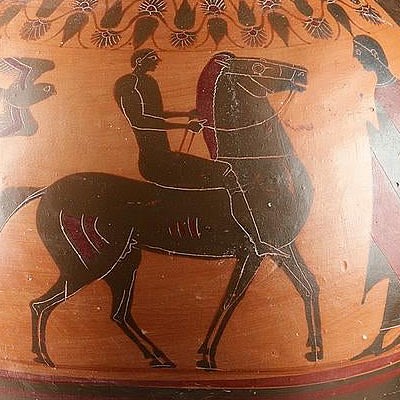12th C. Khmer Bronze Palanquin Hooks, Lotus Flower (2)
Lot 116
About Seller
Artemis Gallery
686 S Taylor Ave, Ste 106
Louisville, CO 80027
United States
Selling antiquities, ancient and ethnographic art online since 1993, Artemis Gallery specializes in Classical Antiquities (Egyptian, Greek, Roman, Near Eastern), Asian, Pre-Columbian, African / Tribal / Oceanographic art. Our extensive inventory includes pottery, stone, metal, wood, glass and textil...Read more
Categories
Estimate:
$3,500 - $4,500
Absentee vs Live bid
Two ways to bid:
- Leave a max absentee bid and the platform will bid on your behalf up to your maximum bid during the live auction.
- Bid live during the auction and your bids will be submitted real-time to the auctioneer.
Bid Increments
| Price | Bid Increment |
|---|---|
| $0 | $25 |
| $300 | $50 |
| $1,000 | $100 |
| $2,000 | $250 |
| $5,000 | $500 |
| $10,000 | $1,000 |
| $20,000 | $2,500 |
| $50,000 | $5,000 |
| $100,000 | $10,000 |
| $200,000 | $20,000 |
About Auction
By Artemis Gallery
Jun 4, 2020
Set Reminder
2020-06-04 10:00:00
2020-06-04 10:00:00
America/New_York
Bidsquare
Bidsquare : Exceptional Antiquities, Asian, Ethnographic
https://www.bidsquare.com/auctions/artemis-gallery/exceptional-antiquities-asian-ethnographic-5185
An important one-day auction featuring museum-worthy examples of Egyptian, Greek, Roman, Etruscan, Near Eastern, Far East / Asian, Pre-Columbian, African / Tribal, Oceanic, Native American, Spanish Colonial, Russian, Fossils, Ancient Jewelry, Fine Art, so much more! Artemis Gallery info@artemisgallery.com
An important one-day auction featuring museum-worthy examples of Egyptian, Greek, Roman, Etruscan, Near Eastern, Far East / Asian, Pre-Columbian, African / Tribal, Oceanic, Native American, Spanish Colonial, Russian, Fossils, Ancient Jewelry, Fine Art, so much more! Artemis Gallery info@artemisgallery.com
- Lot Description
Southeast Asia, Cambodia, Khmer Empire (Angkor culture), ca. 12th to 13th century CE. A pair of cast bronze palanquin hooks, each with a near-identical lotus flower design - they were probably cast from the same mold. The lotus flower opens outward atop a large cylindrical socket. On the lower part of the socket, extending from one side and curving upward to form a sturdy hook, is a closed lotus flower bud. Four bodhisattvas with ornate headdresses adorn the lower sides of the socket at the same level as the hook. The inside area of each socket has an iron patina and signs of wear, a reminder of the purpose of these beautiful objects. Size of one (they are almost identical): 3.75" W x 6" H (9.5 cm x 15.2 cm); 6.95" H (17.7 cm) on included custom stand.
Palanquin hooks were an essential part of the wooden and wicker palanquins that were the primary mode of transport for royal and elite people in Khmer society. Tese decorative hooks were used to suspend the palanquin from the transverse pole used to carry it. The technical skill and artistry of Khmer bronze casters is evident in these examples; note their ornate decoration despite their heavy use.
A similar pair sold at Christie's, New York, on March 20, 2012 (Lot 181) for $6250. A less ornate pair that provides a clear photo of how they were used alongside a ring is at the British Museum (1946,1015.2).
Provenance: private New York, New York, USA collection; ex-private Rhode Island collection, 2000s
All items legal to buy/sell under U.S. Statute covering cultural patrimony Code 2600, CHAPTER 14, and are guaranteed to be as described or your money back.
A Certificate of Authenticity will accompany all winning bids.
We ship worldwide and handle all shipping in-house for your convenience.
#153115All are intact and in great condition with matte green patina, well preserved motifs, and deposits on the interiors of their sockets that suggest use.Condition
- Shipping Info
-
All shipping is handled in-house for your convenience. Your invoice from Artemis Gallery will include shipping calculation instructions. If in doubt, please inquire BEFORE bidding for estimated shipping costs for individual items.
-
- Buyer's Premium



 EUR
EUR CAD
CAD AUD
AUD GBP
GBP MXN
MXN HKD
HKD CNY
CNY MYR
MYR SEK
SEK SGD
SGD CHF
CHF THB
THB














